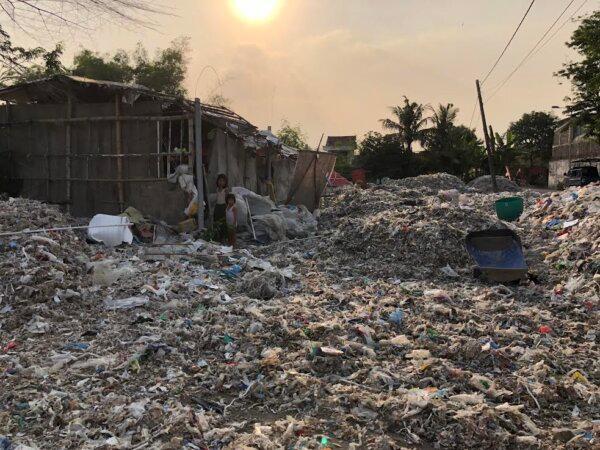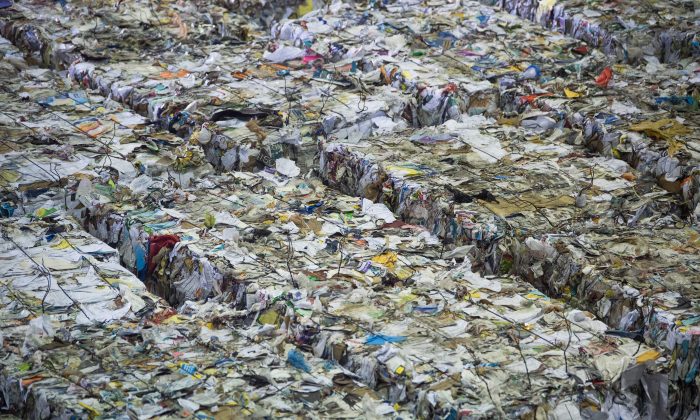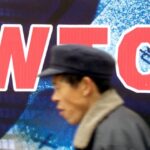Consumers have been misled about the recyclability of plastic, with industry labeling causing the public to place too much trust in what is not an easy solution for reducing waste, according to policy analyst David Allaway. The narrative surrounding plastic recycling was largely a public relations tactic to gain approval in the late 1980s when plastic waste was becoming a growing concern. The Society of the Plastics Industry (SPI) introduced resin identification codes (RIC) on plastic packaging as a way to help the public and recyclers sort different plastic resins apart from each other. However, this has led to confusion among states over what symbol to use in manufacturing and recycling.
The SPI successfully lobbied up to 40 states to require consumer brands to put RIC on plastic packaging, but the change from chasing arrows to a solid triangle has caused further confusion. Most materials with the resin identification codes are not recyclable and are not accepted by local recycling programs. The unrecyclable plastic tossed into the recycling bin becomes more expensive to sort out at recycling facilities and adds to plastic waste. The recycling industry has been warning the plastics industry since the 1990s about the misleading nature of the RIC codes, but no action has been taken to address the issue.
According to the ASTM, the SPI developed the RIC at the urging of recyclers during the 1980s, but Mr. Allaway believes this is a way for the plastic industry to pass the blame. The problem of plastic waste remains unsolved despite the codes being mandated in over 30 states. This situation has led to confusion over what is recyclable and what is not, resulting in what Mr. Allaway describes as “state-mandated public deception.”
The Biden administration’s Bipartisan Infrastructure Bill has earmarked $275 million for waste management improvement, which is the largest investment made by the nation in this area. This funding aims to research and implement improvements to solid waste management capability and capacity, as well as provide education and outreach to help resolve some of these challenges. However, this is just the beginning,” she mentioned. According to her, the waste stream of plastic has become increasingly intricate over time due to insufficient investment in recycling technology. “We are facing challenges regarding how much of it is actually recyclable,” she explained.
In 2021, the EPA introduced The National Recycling Strategy: Part One of a Series on Building a Circular Economy (NRS) to enhance the nation’s solid waste recycling system, as stated by Ms. Shaw. “Given that China ceased accepting our plastic in 2018 under its National Sword policy, we realized the need to rethink how we handle solid waste in the United States,” Ms. Shaw noted.
Under Operation National Sword, China imposed stricter regulations on recyclable waste imported from other countries. This policy served as a wake-up call for individuals in the recycling industry, such as Zoe Heller, the deputy director of CalRecycle’s division of the circular economy, who acknowledged in an interview with The Financial Times in 2019 that “recycling isn’t free.”
Ms. Heller emphasized the necessity for a paradigm shift in global recycling practices. She pointed out that as plastic production continues to rise, more people are becoming aware of the tangible issue of having to decide daily between throwing items in the trash or in the recycling bin.
The United Nations will be hosting its fourth Intergovernmental Negotiating Committee on Plastics Pollution (INCPP) in Ottawa, Canada from April 23 to 29, where stakeholders will discuss global solutions, Ms. Shaw mentioned. “Having these discussions is crucial as it marks the first step towards addressing the problem,” she added.
Despite the challenges, Mr. Alloway mentioned that there have been improvements in the plastic recycling dilemma. He highlighted that in 2012, a significant portion of plastics collected for recycling in the U.S. was shipped overseas, but by 2021, only 8% of the material was being exported, with 92% staying in North America.
Recycling in the U.S. involves commingle or single-stream recycling, where various materials are collected together and sorted at a material recovery facility (MRF). Some plastics that can’t be recycled are sent to landfills, while others are processed by plastics reclaimer companies to make new products.
However, Mr. Alloway noted that the recycling process is not perfect, with some plastic ending up in paper mills and eventually being discarded in landfills. This global issue was exemplified by the export of waste to countries like Indonesia, where plastic pollution has become a significant problem.
In East Java, Indonesia, biologist and environmentalist Prigi Arisandi, founder of Ecoton, has been working to raise awareness about plastic pollution in the region. He highlighted the harmful effects of imported plastic waste on the environment and public health, stressing the need to halt the export of waste to countries like Indonesia.
It is imperative to cease waste exports to Indonesia.

‘Complicated System’
In response to an initial question on where the plastic waste goes, Mr. Allaway answered, “It goes all over the place. It’s a complicated system.”
Efforts are being made to simplify this system and reduce plastic waste, efforts that Ms. Shaw said 85 percent of Americans support.
“I say that because it’s important to recognize that people want to do the right thing,” she said.






